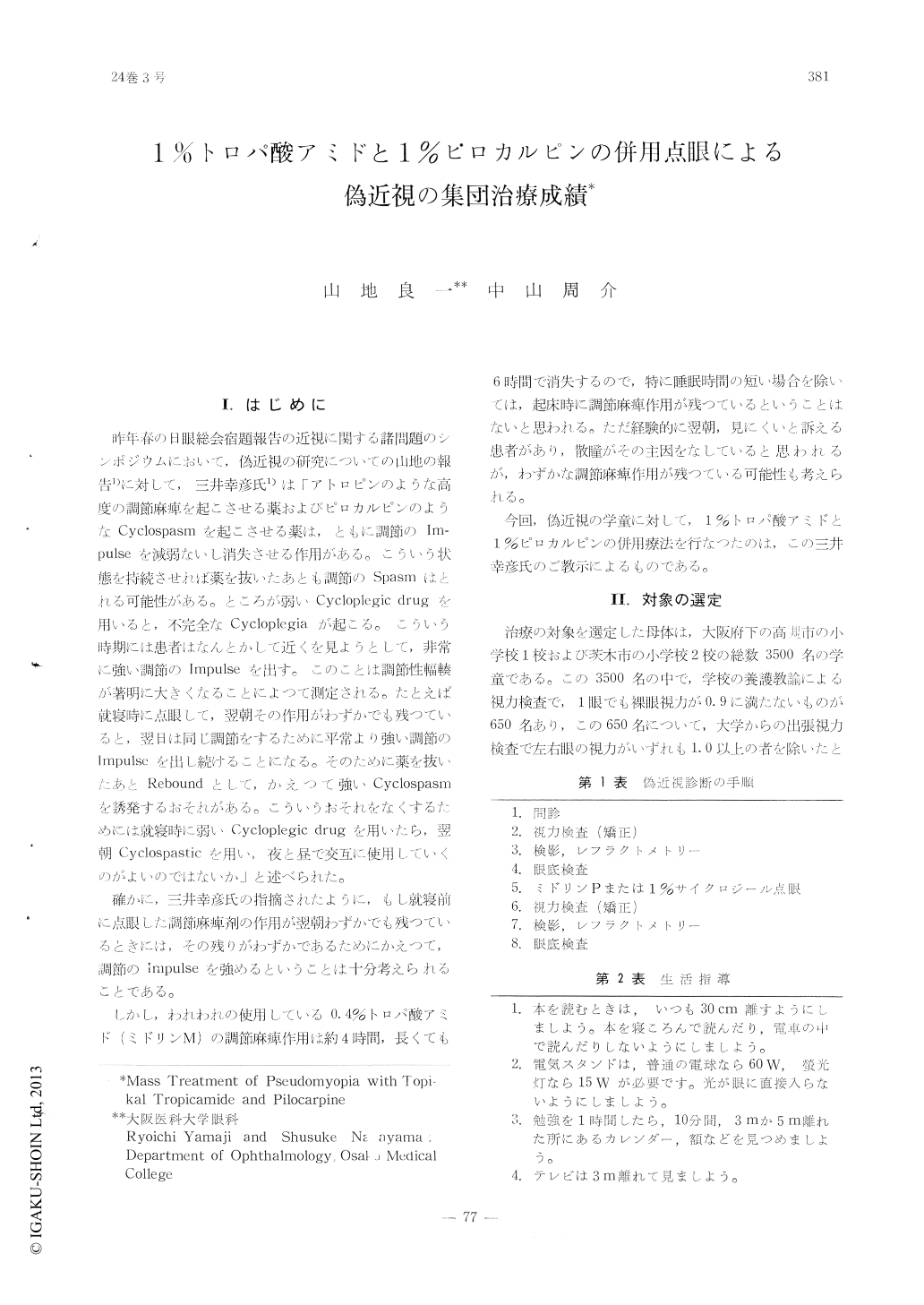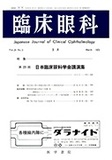Japanese
English
- 有料閲覧
- Abstract 文献概要
- 1ページ目 Look Inside
I.はじめに
昨年春の日眼総会宿題報告の近視に関する諸問題のシンポジウムにおいて,偽近視の研究についての山地の報告1)に対して,三井幸彦氏1)は「アトロピンのような高度の調節麻痺を起こさせる薬およびピロカルピンのようなCyclospasmを起こさせる薬は,ともに調節のIm—pulseを減弱ないし消失させる作用がある。こういう状態を持続させれば薬を抜いたあとも調節のSpasmはとれる可能性がある。ところが弱いCycloplegic drugを用いると,不完全なCycloplegiaが起こる。こういう時期には患者はなんとかして近くを見ようとして,非常に強い調節のImpulseを出す。このことは調節性輻輳が著明に大きくなることによつて測定される。たとえば就寝時に点眼して,翌朝その作用がわずかでも残つていると,翌日は同じ調節をするために平常より強い調節のImpulseを出し続けることになる。そのために薬を抜いたあとReboundとして,かえつて強いCyclospasmを誘発するおそれがある。こういうおそれをなくするためには就寝時に弱いCycloplegic drugを用いたら,翌朝Cyclospasticを用い,夜と昼で交互に使用していくのがよいのではないか」と述べられた。
Fifty pseudomyopic children were chosen from 3,500 pupils in primary schools and were treated by instillation of 1% tropicamide be-fore going to bed and 1% pilocarpine early in the morning. This form of treatment was continued for 3 months. Analysis of the refrac-tive states before and after the therapy resul-ted in findings as follows :
1. As concerns the visual acuity, 89.4% of the cases showed improvement.
2. Comparison of ref ractometric findings be-fore and after the therapy showed decrease in the degree of myopia in 93.6% of the tested eyes.

Copyright © 1970, Igaku-Shoin Ltd. All rights reserved.


